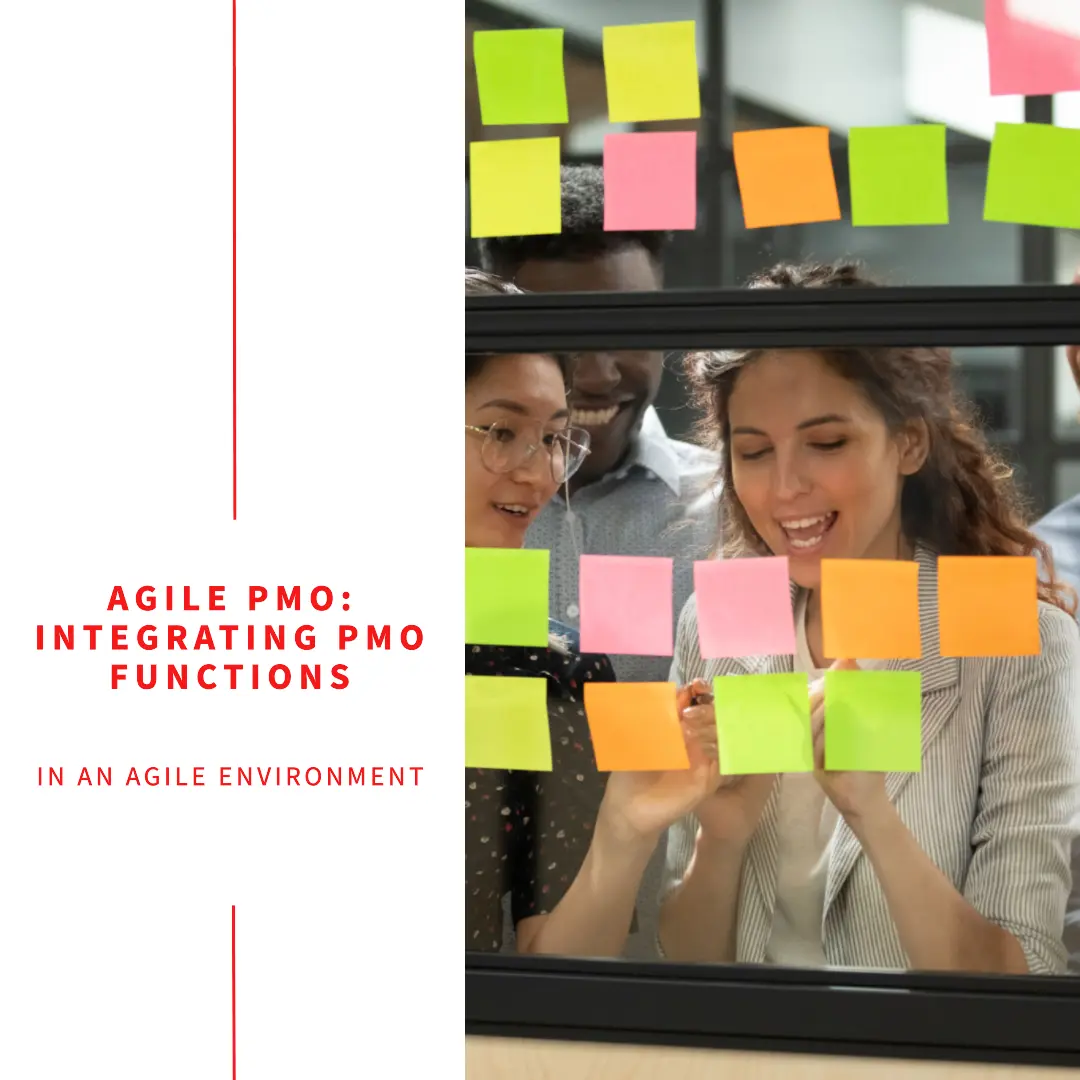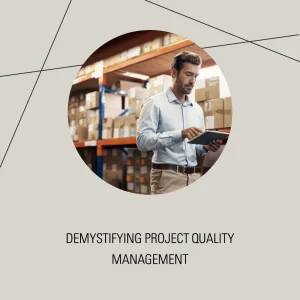I. Introduction
Hello, fellow project management enthusiasts! Today, I want to dive into an exciting topic that has been gaining traction in recent years: integrating PMO functions in an agile environment. As organizations are rapidly adopting agile methodologies, it’s essential for the PMO to adapt and provide value in this new setting.
But first, let’s take a step back and look at the traditional PMO functions. In a nutshell, a Project Management Office (PMO) is the backbone of any organization’s project management system. It’s responsible for ensuring that projects are delivered on time, within scope, and with the right quality. Some of the key responsibilities of a PMO include setting project management standards, providing tools and resources, and monitoring project performance.
Now, let’s shift our focus to agile project management. Agile methodologies have transformed the way we approach projects by emphasizing flexibility, collaboration, and customer-centricity. Instead of the traditional “waterfall” approach, where projects progress through sequential phases, agile projects are broken down into smaller, iterative cycles called “sprints.” This allows for faster feedback, continuous improvement, and greater adaptability.
Given these fundamental differences, it’s no surprise that PMOs must adapt their functions to remain relevant and provide value in an agile environment. In the following sections, we will explore the role of PMOs in agile project management, the challenges they face, and how they can adapt their functions for success.
So, are you ready to learn how to integrate PMO functions in an agile environment? Let’s dive in!
II. The Role of PMO in Agile Project Management
Hey there, project management aficionados! In the previous section, we touched on the differences between traditional PMO functions and agile project management. Now, let’s delve deeper into the role of PMOs in an agile context and how they can contribute to the success of agile teams and projects.
A. Understanding the differences between traditional and agile PMOs
Traditional PMOs often focus on control, standardization, and compliance. In contrast, agile PMOs must embrace a more flexible and adaptive mindset. They should support an environment where change is not only expected but encouraged. Agile PMOs need to promote a culture of collaboration, continuous improvement, and transparency.
B. Supporting agile teams and projects
One of the primary responsibilities of an agile PMO is to provide support for agile teams and projects. This can include offering training and coaching on agile methodologies, helping teams adopt and customize their processes, and providing the necessary tools and infrastructure for effective collaboration. An agile PMO should also act as a champion for agile practices within the organization, fostering buy-in from stakeholders and senior management.
C. Facilitating communication and collaboration
Effective communication and collaboration are crucial in agile project management. An agile PMO should work to break down silos and encourage cross-functional collaboration among teams. This can involve facilitating meetings and workshops, creating channels for open communication, and promoting a transparent environment where teams can share their progress, challenges, and learnings.
D. Providing agile governance and oversight
Although agile methodologies emphasize flexibility, it doesn’t mean that governance and oversight should be thrown out the window. An agile PMO must strike a balance between providing the necessary guidance and empowering teams to make their own decisions. This can be achieved by setting up agile-friendly governance structures, such as lightweight reporting mechanisms, flexible budgeting processes, and outcome-based performance metrics.
In the next section, we’ll discuss the challenges PMOs face in an agile context and how they can tackle them head-on. So, buckle up and let’s continue our journey towards integrating PMO functions in an agile environment!
III. Challenges Faced by PMOs in an Agile Context
Hello again, my project management pals! By now, we’ve covered the role of PMOs in an agile environment and how they can contribute to agile project success. But, as you might expect, this transition isn’t always smooth sailing. Let’s explore some common challenges PMOs face when adapting to an agile context and how they can navigate these turbulent waters.
A. Adjusting to a more decentralized decision-making process
One of the most significant shifts for PMOs in an agile environment is the move towards decentralized decision-making. Agile teams are empowered to make decisions, and this can be a challenging adjustment for PMOs used to a more top-down approach. To overcome this hurdle, PMOs must learn to trust their teams and focus on providing guidance and support rather than trying to control every aspect of the project.
B. Balancing flexibility and control
In an agile environment, striking the right balance between flexibility and control can be a delicate act. PMOs need to ensure that teams have enough freedom to adapt and respond to change, without losing sight of the overall project objectives. This requires PMOs to embrace a more adaptive approach to governance and oversight, focusing on outcomes rather than rigid processes.
C. Evolving organizational culture
Adapting to an agile environment often involves significant cultural change within the organization. PMOs must help promote a culture of collaboration, trust, and continuous improvement. This can be challenging, especially if there is resistance from stakeholders or team members who are more comfortable with traditional methods. PMOs should lead by example, demonstrating the benefits of agile practices and fostering open communication to address concerns and challenges.
D. Adapting to new metrics and reporting structures
Finally, PMOs must adapt to new metrics and reporting structures that align with agile principles. Traditional project management metrics, such as planned vs. actual timelines and budgets, may not provide meaningful insights in an agile context. Instead, PMOs should focus on outcome-based metrics, such as customer satisfaction, team velocity, and quality indicators, to measure project success and drive continuous improvement.
Stay tuned for the next section, where we’ll discuss how PMOs can adapt their functions for an agile environment and emerge stronger than ever!
IV. Adapting PMO Functions for an Agile Environment
Welcome back, fellow project management enthusiasts! We’ve explored the role of PMOs in agile project management and the challenges they face. Now, it’s time to dive into the exciting part: how PMOs can adapt their functions to thrive in an agile environment. Let’s get started!
A. Embracing an agile mindset
The first and most crucial step in adapting PMO functions for an agile environment is embracing an agile mindset. This means letting go of traditional, rigid processes and adopting a flexible, adaptive approach. PMOs must be open to change, encourage experimentation, and promote a culture of continuous learning and improvement. Remember, it’s not just about implementing agile practices; it’s about embracing the underlying principles and values.
B. Streamlining processes and reducing bureaucracy
In an agile environment, PMOs should focus on streamlining processes and reducing bureaucracy to increase efficiency and enable faster decision-making. This can involve simplifying reporting structures, automating repetitive tasks, and eliminating unnecessary documentation. By cutting through the red tape, PMOs can help teams focus on delivering value to customers and driving innovation.
C. Implementing agile tools and techniques
To support agile teams effectively, PMOs must be well-versed in agile tools and techniques. This can include adopting agile project management software, implementing visual management tools like Kanban boards, and utilizing techniques such as Scrum, Lean, or XP. By providing teams with the right tools and resources, PMOs can empower them to manage their work more effectively and continuously improve their processes.
D. Fostering a culture of continuous improvement
A cornerstone of agile project management is the commitment to continuous improvement. PMOs must foster a culture where teams are encouraged to reflect on their performance, identify areas for improvement, and implement changes to enhance their processes. This can involve facilitating regular retrospectives, promoting knowledge sharing, and celebrating successes and learnings.
In the next section, we’ll delve into a real-life case study of a successful PMO integration in an agile organization. So, stay tuned as we continue our journey towards mastering the art of integrating PMO functions in an agile environment!
V. Case Study: Successful PMO Integration in an Agile Organization
Hello again, project management mavens! So far, we’ve discussed the role of PMOs in agile project management, the challenges they face, and strategies for adapting their functions in an agile environment. Now, let’s bring these concepts to life with a real-world example of a successful PMO integration in an agile organization.
A. Background and challenges faced by the organization
Our case study focuses on a mid-sized software development company that decided to transition from a traditional waterfall approach to agile project management. The organization faced several challenges, including resistance to change, lack of agile knowledge, and concerns about maintaining control and governance.
B. Steps taken to integrate PMO functions in an agile environment
To successfully integrate PMO functions in this agile environment, the organization took the following steps:
- Agile training and coaching: The PMO provided comprehensive training on agile methodologies for all team members and stakeholders, as well as ongoing coaching and support to help teams adopt and refine their agile practices.
- Streamlining processes: The PMO worked closely with teams to identify opportunities for streamlining processes and reducing bureaucracy. They implemented lightweight reporting mechanisms, simplified documentation requirements, and encouraged cross-functional collaboration.
- Agile tools and techniques: The PMO introduced agile project management tools and techniques to support team collaboration, planning, and execution. This included implementing Scrum and Kanban, as well as leveraging agile project management software.
- Fostering a culture of continuous improvement: The PMO facilitated regular retrospectives for teams to reflect on their performance, identify areas for improvement, and make data-driven decisions. They also encouraged knowledge sharing and celebrated both successes and learnings.
C. Outcomes and lessons learned
As a result of these efforts, the organization experienced significant improvements in project delivery, customer satisfaction, and team engagement. Some key lessons learned from this case study include:
- Patience and persistence: Transitioning to an agile environment and integrating PMO functions takes time and dedication. It’s essential to be patient, persistent, and supportive throughout the process.
- Open communication: Addressing concerns, sharing knowledge, and celebrating successes openly helps build trust, foster buy-in, and promote a culture of continuous improvement.
- Adaptability: PMOs must be prepared to adapt their functions and processes to meet the unique needs of each team and project. Embracing an agile mindset and focusing on continuous improvement is crucial for long-term success.
In our next and final section, we’ll wrap up with some key takeaways and words of encouragement for organizations looking to integrate PMO functions in an agile environment. Don’t miss it!
VI. Conclusion
And just like that, we’ve reached the end of our exciting journey through the world of agile PMOs! I hope this exploration has given you valuable insights into the role of PMOs in agile project management, the challenges they face, and the strategies for adapting their functions in an agile environment. As we conclude, let’s recap some key takeaways and offer a few words of encouragement for organizations on this journey.
A. The importance of PMO integration in an agile environment
As organizations continue to embrace agile methodologies, it’s crucial for PMOs to adapt their functions to remain relevant and provide value. Successfully integrating PMO functions in an agile environment can lead to improved project delivery, increased customer satisfaction, and a more engaged and empowered workforce.
B. Key takeaways for organizations looking to adapt their PMO functions
- Embrace an agile mindset: Let go of traditional, rigid processes and adopt a flexible, adaptive approach that encourages experimentation and continuous learning.
- Streamline processes and reduce bureaucracy: Simplify reporting structures, automate repetitive tasks, and eliminate unnecessary documentation to enable faster decision-making and increase efficiency.
- Implement agile tools and techniques: Equip teams with the right tools and resources to manage their work effectively and continuously improve their processes.
- Foster a culture of continuous improvement: Encourage teams to reflect on their performance, identify areas for improvement, and implement changes to enhance their processes.
C. Encouragement for organizations to embrace change and continuously improve
Transitioning to an agile environment and integrating PMO functions can be a challenging yet rewarding endeavor. Remember, Rome wasn’t built in a day, and neither is a successful agile PMO. It’s essential to be patient, persistent, and supportive throughout the process. Embrace change, learn from setbacks, and celebrate successes along the way.
As you embark on your own journey towards integrating PMO functions in an agile environment, I wish you the best of luck. Keep learning, growing, and adapting, and don’t forget to enjoy the ride!
To find out how Artificial Intelligence is changing the Project Management landscape, you have enjoy reading this article https://www.shaunstoltz.com/did-artificial-intelligence-just-change-everything-about-project-management/
Find out more about Shaun Stoltz https://www.shaunstoltz.com/about/
This post was written by an AI and reviewed/edited by a human.



